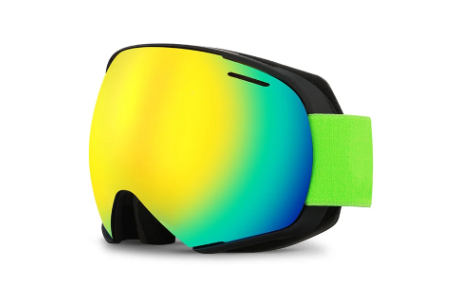Copyright 2020 Shenzhen Reanson Products Co., Ltd. All rights reserved. Site Map
If you're new to skiing or have only gone a few times, you might be considering investing in some goggles.
While ski masks and sunglasses are both acceptable for beginners, goggles make more sense because beginners are more likely to fall and get hurt.
If you don't want to pay the extra money, your current pair of sunglasses will serve just enough to protect your eyes from the sun and snow glare.
If you'd rather get a new pair of sunglasses that you can wear all year long merely to go shopping, you might want to consider ones that are perhaps more appropriate for skiing than your Ray-Bans, Guccis, or other luxury eyewear.
Both goggles and sunglasses have advantages and disadvantages when used for Nordic skiing. Here are the distinctions between skiing with sunglasses vs. skiing with goggles, split down into benefits and drawbacks:
A ski mask is far less pleasant to wear than sunglasses. Sunglasses don't pinch the area around your eyes and are really pretty comfortable to wear.

Only when you compare sunglasses and ski goggles side by side do the disadvantages of each become clear. The following are some reasons why wearing sunglasses while skiing may be a bad idea:
The majority of ski sunglasses include openings on the sides, top, and bottom. This implies that rain and snow might irritate your eyes.
Additionally, it may easily find its way inside and cause your eyes to start to water while you are moving quickly downhill or when there is a strong breeze blowing in.
Unless you have a special helmet, ski goggles are more secure on your face than any kind of headgear or visor, so they're probably not worth wearing.
Even if you prefer to use sunglasses, there are situations when skiing goggles are more suited. Typically, during these periods, the weather is terrible and you need extra protection. Here are a few benefits of snow goggles.
Your eyes will be better protected by snow goggles than by sunglasses. When skiing in a forest, they will prevent branches and twigs from glancing off your eyes. Additionally, if you fall, goggles are more likely to stay on your head. Goggles offer more protection if you fall head first into a rail.
Modern ski goggles offer the widest possible field of vision from any angle. A nose bridge gives you a wider view up, down, and to the sides in addition to obstructing your view straight ahead, allowing your peripheral vision to function as it should.
On the other hand, there are certain drawbacks to this, because ski goggles are warmer than sunglasses.
Snow masks are frequently less comfortable with time and do not breathe as effectively as sunglasses. The primary drawbacks to using snow goggles when skiing are:
The majority of people consider snow goggles to have a disadvantage, despite what some may consider it to be a benefit. Although the tight fit required by goggles might keep you warm, it also makes you sweat, can mess up your hair, and can lead to sinus pressure buildup. After 8 hours of wearing ski goggles, you will be glad to take it off for the day. At first, it isn't really obvious.
We are a well-known company with a proven track record of excellence in the design and production of various high-performance ski goggles.
We are therefore here to provide you with the best products each and every time if you have been wondering where to get the best pairs for your upcoming trip or adventure, click here.
By continuing to use the site you agree to our privacy policy Terms and Conditions.